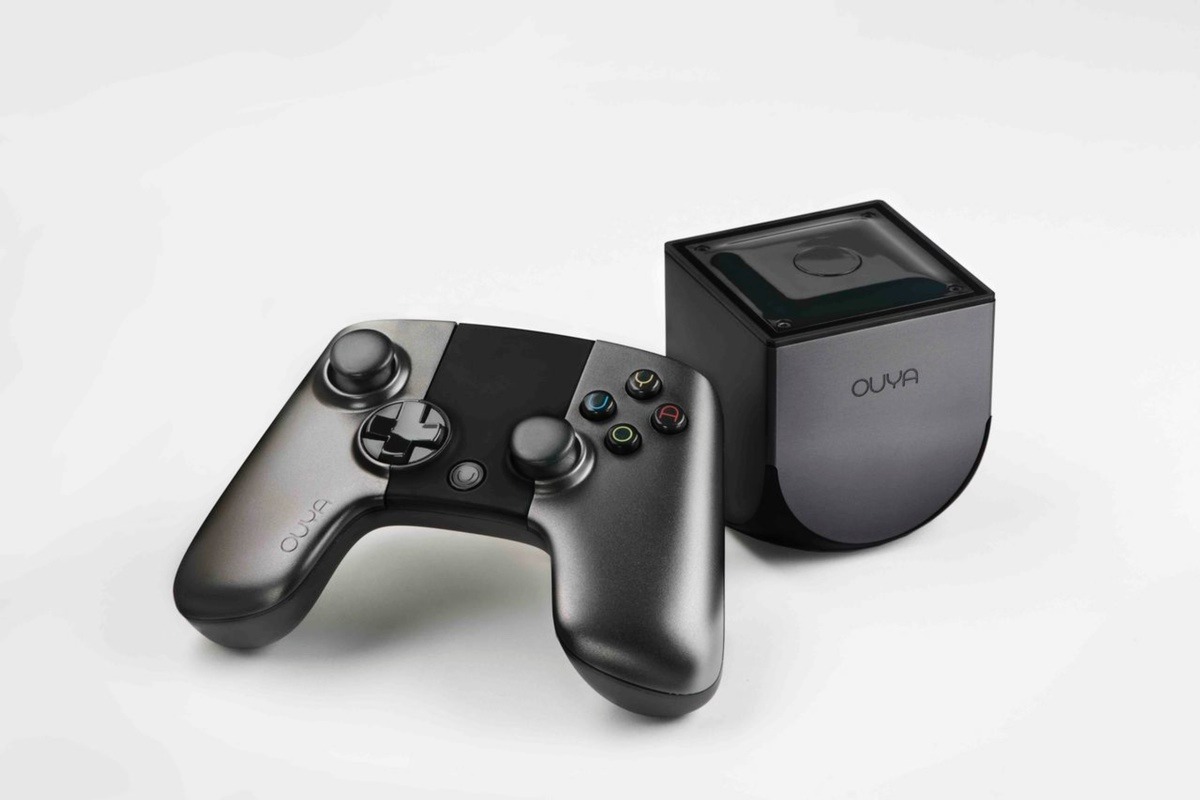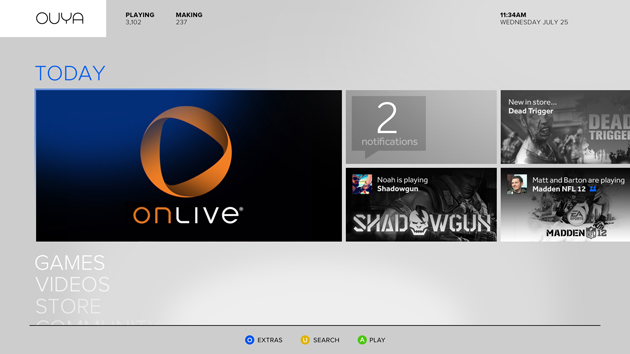
This feature was contributed by Kynan Ward, who recently received an Ouya and took it out for a test drive. He is an independant game developer based in Melbourne, working on Apollo.
The famous crowdfunded console is now available to the general public. For those unfamiliar with the backstory, the OUYA device first appeared to gamers on the crowdfunding website Kickstarter where it was backed by several industry veterans including Julie Uhrman, Muffi Ghadiali, and philanthropic designer Yves Behar. Gamers were sold, with over 60,000 unique pledges made totalling over 8 million USD, before the product even existed. So what made this console so popular? One word: community.
The goal behind OUYA was to create a console that users can claim total ownership of. Indeed, the decision to appeal to gamers directly for startup funds was something new and obviously appreciated by a large portion of the gaming community. The decision to use the OUYA letters to mark the four buttons on the controller was initiated by the community itself and taken in by the developers. While this collaboration generated excitement and hope for the future, nobody really knew if the console itself was any good.
OUYAs strength is its accessibility, with a low price point of $99, all games being free to try, and warranty that includes opening up the case. The only drawback of this is that the components are not as advanced as one would expect from a console that debuts in the same year as the PS4. It wields a Tegra 3 quad-core processor, 1GB of RAM, and 8GB of internal memory. Phones have obviously been at the forefront of technology recently so it shouldn’t surprise anyone to see the crossover of components starting to occur. The Tegra 3 is quite powerful, but power isn’t the appeal. It has USB and ethernet connections so it can be used as a media player. It comes in a sexy small case, and unlike other consoles it says ‘take my covers off’. The OUYA can be opened up with standard equipment and won’t void the warranty while doing so. The purpose of this is to encourage developers and curious owners alike to create and share inventions, hacks, and hotfixes. Likewise the software is open to Curious Georges also, which means a richer OUYA experience for the average user in future.
Included with the OUYA is a short HDMI cable, a power adapter, and a wireless controller. The controller has a number of interesting features. First impressions were good, it felt well made and has metal top plates which makes the whole thing feel solid. The strangeness began when seeing a pair of batteries inside the box, and no instructions or indication to tell me where they go. It ended up being simple and (I think) a well thought out design but the lack of instruction meant I had to search on the web for setup instructions which wasn’t ideal. To clarify, you simply pry the metal face plates off the top of the controller, they are secured by magnets and there are no catches. The controller has a central button, two analog sticks, a directional pad, four buttons in an array, and trigger/shoulder combinations on either side. The buttons feel solid, but the trigger and shoulder buttons feel a little undercooked as if they are missing a spring or something. The most interesting thing about the controller though is the touchpad, which sits in the middle. It isn’t big enough to interfere with the layout of the buttons and there are no markings so by design it is subtle, but my concern is reducing something the size of a TV screen down to a two inch square doesn’t leave a lot of fidelity. The touchpad doesn’t seem to fit with the rest of the controller, and I hope given it is a low end console that consumers don’t pay extra for something they won’t use. My only real concern with the performance of the controller are the periodic split-second pauses, which unfortunately make the whole experience feel cheaper. While the controller does the job, to call it the ‘Stradivarius of controllers’ is obviously a sales pitch, it plays second fiddle to established controllers. Keep in mind you can use most other wireless controllers, including those from the PS3 and XBox. The effect of the touchpad remains to be seen, as the number of games and applications increases we may see some that take full advantage of it.
At present there are around 300 games and several apps ready for download straight to the OUYA. An internet connection via WiFi or Ethernet is therefore required, but only for browsing the store and downloading. Unfortunately this means the box art is resigned to adorn our virtual shelves. A credit card is also a requirement for an account, but there are naturally no charges unless you choose to make a purchase. Interestingly the purchase process is initiated from within the game itself, which means there are some inconsistencies between games that can make purchasing more difficult. This also means the browsing process itself becomes much more entertaining, we can view the marketplace without judging based on price, and take time exploring while our selections download. This also allows for some interesting marketing strategies such as one time offers if you back out of a sale. Games should be the first reason for people to buy a game console and the lack of any iconic individual game performances lessens the impact for sure, however there are many games worth your time such as Canabalt HD, Final Fantasy III, and the OUYA exclusive Towerfall. Apps like TwitchTV and tunein have been on since the start and while they might be a patch or two short of complete, they significantly increase the appeal. The OUYA runs on a modified version of Android 4.1, so expect to see some popular mobile game ports. I have seen some very poor quality games available already, so quality control will be a big question when the game population increases. I feel there is something missing from the searching process, some sort of broader catalogue, although categories do exist from most popular to genres to latest releases I can’t help but feel I am missing a gem. Some games, especially those run through the many emulators, have reportedly chugged at certain points but I feel it is hard to blame the OUYA because the games in question are usually ports or ROMs not created with the ouya in mind.
All in all the OUYA is a great console for tinkers, budget gamers, and casual gamers. Its size means it is very portable – I was able to throw it in my luggage without having to make room for it on an interstate trip. Playing older games and casual games is a blast, and lots more games will be available in future. Watching eSports through twitch or simply putting on some internet radio works really well and I feel makes this console ideal for communal areas. A free to play market model has been long awaited for consoles – mobile gaming has proven its viability, and I feel OUYA does well in bridging the gap. Drawbacks are a limited library of decent games and questionable controller implementation, both of which can be resolved immediately, through ROMs and using a different brand controller. It’s only a matter of time before we see a range of excellent games hit the system, and until then I can understand people holding off. While it might not be all there yet, it must be said that ofttimes a very small device can cast a very large shadow.



